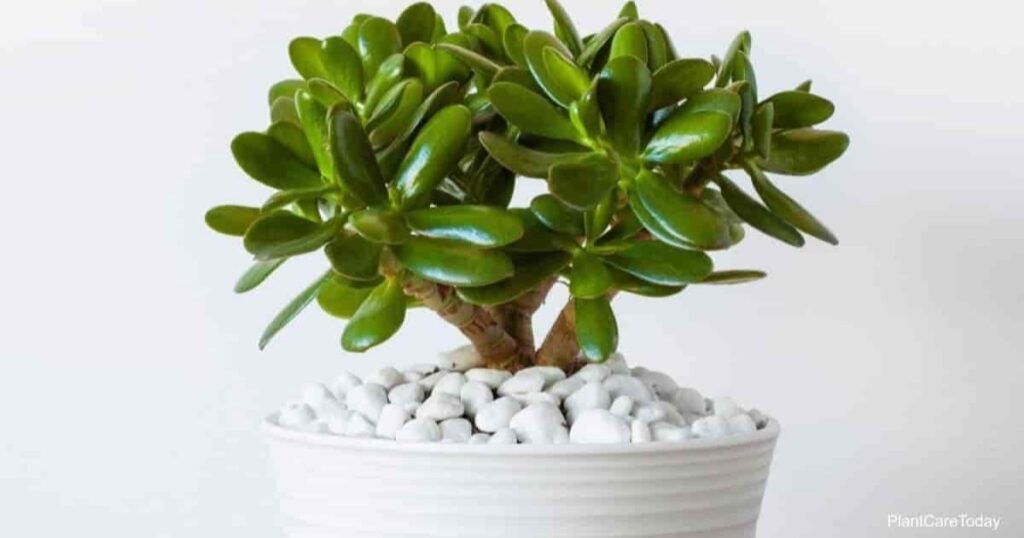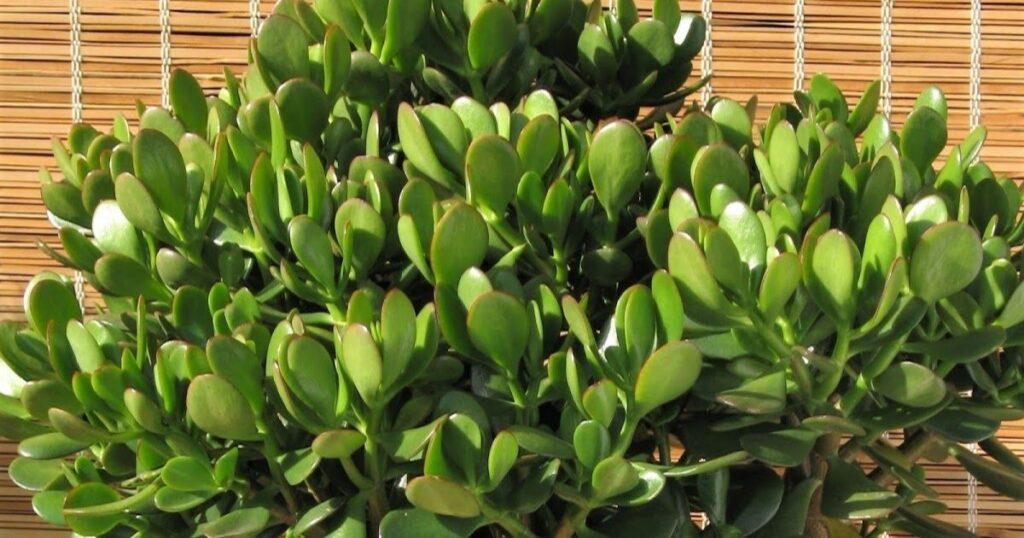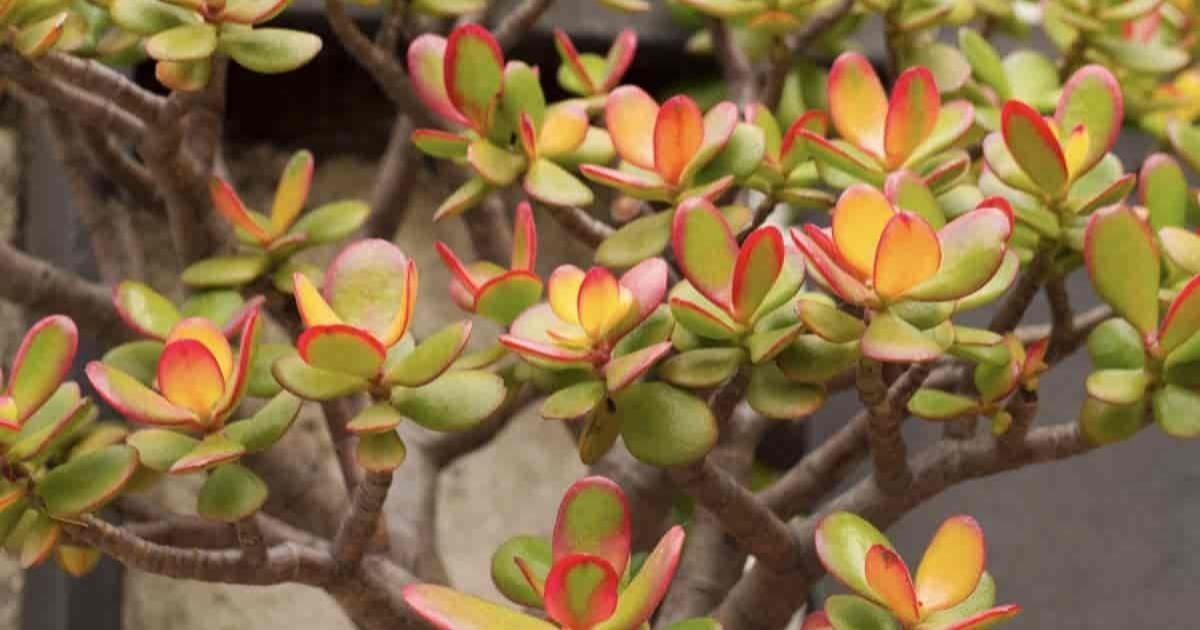Crassula Ovata, commonly known as the jade plant or lucky plant, is a succulent that has become a popular choice for many homes. Not only does it offer an aesthetically pleasing look, but it also provides numerous benefits that make it a valuable addition to any indoor space. In this comprehensive guide, we will explore the various advantages of the jade plant, the different types available, and the best practices for caring for this versatile houseplant.
Types of Jade Plant:
1. Traditional Jade Plant:
Also known as the Money Plant, this is the most common type of jade plant. It features thick, oval-shaped leaves that grow in opposite pairs, creating a tree-like structure.
2. Hobbit Jade Plant:
Also known as the Gollum Jade Plant, this variety has small, round leaves that are curled and stacked on top of each other, giving it a unique and whimsical appearance.
3. Ripple Jade Plant:

This type of jade plant has leaves with a rippled or crinkled texture, adding a distinctive and visually appealing element to any indoor garden.
4. Variegated Jade Plant:
This stunning variety features leaves with a combination of green and yellow or cream-colored stripes, creating a striking and eye-catching display.
5. Tricolor Jade Plant:
A rare and highly sought-after variety, the Tricolor Jade Plant boasts leaves with three colors: green, yellow, and red, making it a true standout in any collection.
6. Silver Jade Plant:
With its leaves covered in a silvery-grey coating, the Silver Jade Plant offers a unique and beautiful appearance that adds a touch of elegance to any space.
Also read this post:Plants for Oxygen:
Benefits of Jade Plant
Air Purification:
Jade plants are highly effective at purifying the air by removing harmful toxins such as benzene and formaldehyde. This makes them an excellent choice for improving indoor air quality and creating a healthier living environment.
Easy to Care:
In today’s fast-paced world, jade plants are an ideal companion as they are low-maintenance and easy to care for. Their succulent nature means they require minimal watering, making them a hassle-free addition to any home.
Feng Shui:

In the ancient Chinese practice of Feng Shui, jade plants are believed to bring good luck and fortune. Placing a jade plant in the southeast corner of a room is said to attract prosperity and wealth.
Decorative:
Jade plants have a unique and lustrous appearance, with their thick, glossy leaves growing in a visually appealing tree-like structure. They are a popular choice for adding a touch of natural greenery and elegance to any room in the house.
Symbolic:
In some cultures, the jade plant is considered a symbol of friendship, loyalty, and good fortune. Gifting a jade plant is believed to bring luck and prosperity to the recipient.
How to Plant Jade Plant:
Choosing a Suitable Pot:
Select a pot with drainage holes at the bottom to allow excess water to drain out. The pot should be slightly larger than the root ball of the jade plant.
Preparing the Soil:
Jade plants prefer well-draining soil. You can mix potting soil with sand or perlite to improve drainage and ensure the plant’s roots are not sitting in water.
Planting the Jade Plant:

Place the jade plant in the center of the pot and fill it with the prepared soil, leaving about an inch of space at the top. Press down the soil firmly around the plant to remove any air pockets.
Watering the Plant:
Water the jade plant thoroughly, allowing the excess water to drain out of the pot. Wait until the soil dries out completely before watering again.
Placing the Plant:
Jade plants thrive in well-lit areas, such as near a window that receives bright, indirect sunlight. Avoid placing them in direct sunlight, as this can scorch the leaves.
Jade Plant Placement As Per Vastu:
In Vastu Shastra, the ancient Indian system of architecture, the placement of plants is believed to have an impact on the energy flow of a space. The jade plant is a popular choice in Vastu, and here are some guidelines for its placement:
North or East Direction:
According to Vastu, the jade plant should be placed in the north or east direction of the house, as these directions are considered auspicious and believed to bring good luck and prosperity.
Living Room:
The living room is an ideal location for a jade plant, as it is a social space where people spend a lot of time. The presence of the plant in the living room is said to improve the flow of positive energy in the space.
Entrance:
Another great place to keep a jade plant is near the entrance of the house, as it is believed to attract wealth and prosperity.
Office Placement:
In the office, the jade plant can be placed on the desk or in the reception area, as it is thought to bring success and prosperity to the business.
Remember, these are just general guidelines, and the final placement of the jade plant should be based on personal preference and the layout of your home or office.
In conclusion, the jade plant is a versatile and attractive houseplant that offers numerous benefits, from air purification and Feng Shui to decorative appeal and symbolic meaning. Whether you choose to incorporate a traditional jade plant or one of the many unique varieties, this succulent is sure to enhance the energy and style of your living or working space.
FAQs:
What is the best way to take care of a jade plant?
The best way to care for a jade plant is to provide it with well-draining soil and moderate watering. Jade plants thrive in bright, indirect sunlight and should be watered only when the soil is completely dry, typically every 2-3 weeks.
Which type of jade plant is lucky?
According to Feng Shui beliefs, the traditional jade plant, also known as the money plant, is considered a lucky variety. This type of jade plant is believed to attract prosperity and wealth when placed in the appropriate areas of the home or office.
What makes a jade plant happy?
Jade plants are happy when they receive the right amount of light and water. They prefer bright, indirect sunlight and well-draining soil that is allowed to dry out between waterings, as they are susceptible to root rot if overwatered.
Where is the best place to put a jade plant?
The best place to put a jade plant is in a spot that receives bright, indirect sunlight, such as near a south- or west-facing window. Avoid placing the plant in direct sunlight, as it can scorch the leaves. Jade plants also thrive when placed in the north or east direction of a room, according to Vastu Shastra principles.











